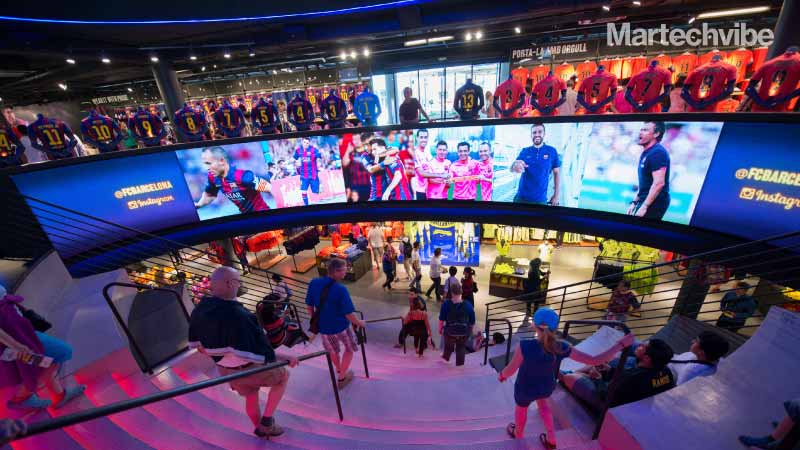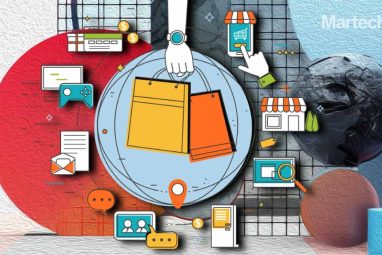The Brick and Click Blend for Retailers
Despite the rapid migration to eCommerce, companies realise that customers still wish to go to in-store locations that include elements of online shopping. Abdel loves shoes and shopping. The only hiccup that dampens his spirits is the long wait for the store employees to find his size. But now, he can reserve his shoes online, […]
Topics

Despite the rapid migration to eCommerce, companies realise that customers still wish to go to in-store locations that include elements of online shopping.
Abdel loves shoes and shopping. The only hiccup that dampens his spirits is the long wait for the store employees to find his size. But now, he can reserve his shoes online, enter the store through a special entrance and find a locker with his name on it. All he has to do is pull out his phone to unlock the locker and find the shoes waiting to be tried on.
A few years ago, when Nike had to build their 68,000 square feet store in New York, they decided to launch a fully integrated online brick and mortar store with customised floor plans and QR codes on mannequins. Considered to be a bold and controversial move at the time, their House of Innovation 000 was nothing but successful.
No extra time browsing for shoes, no queues, and no waiting for employees to dig out the perfect size from the attic or the basement. This was just one of Nike’s online-in-offline shopping experience strategies.
Also Read: Is Social Commerce The Future of Shopping?
Evolution is inevitable
Even before the rapid digitisation, some retailers long realised the CX rewards of adding digital elements to in-stores. For instance, Gucci, launched in the 1920s, sustained its popularity by embracing the digital element long back in 2011. They had installed interactive displays in flagship stores that let customers search through the inventory with simple hand gestures. No wonder it was the number one fashion brand in Gartner’s L2 Digital IQ Index rankings for a while.
Fast forward to 2021, a Netsuite study reveals that over 95 per cent of customers like to visit stores and 70 per cent of them expect the best of both worlds. With the increased demand for the online and in-store blend, HP expanded its Engage portfolio recently to help businesses create seamless customer experiences that blend across channels and meet customer needs. HP believes brick and mortar stores only need a personalised digital upgrade to meet customer demands. They plan to reveal prices closer to the date of availability in the Middle East.
Even big-box stores have joined the bandwagon. One of the painstaking and frustrating things about in-store shopping is scouring through the dozen aisles, looking for that one product that appears to escape human eyes. Eliminating the hide and seek experience, big departmental stores such as Home Depot have tied their inventory and in-store locators to mobile applications. As a result, customers only have to search for the item on their application, and it informs the aisle and row number.

Innovation is Fundamental
Choosing chatbots and robots as the core elements for the blend is bound to fail spectacularly. According to a Deloitte study, only five per cent of customers are impressed with a basic integration. Meanwhile, 63 per cent of customers wouldn’t mind paying more for a product that includes a personalised in-store experience. The top two technological assists that customers prefer are self-checkout kiosks (38 per cent) and VR try-ons (23 per cent).
Adding an exciting twist to the often monotonous payment move has also begun to garner interest. With a virtual social currency that hatches like an egg and evolves into an animal on the mobile screen of shoppers as they explore products in the store, Burberry opened its first social retail store in China last year.
Although innovation is crucial, experts recommend brands first test the hybrid idea before rolling it out to all its outlets. For instance, Aldo, which has several in-stores worldwide, developed several innovative technological solutions for better multichannel shopping. Then, they organise pilot programmes in some of their stores and only if successful, they add them to all their other branches.
Several other online techniques can be leveraged by retail stores. Apart from the standard mobile shopping integrations, stores can apply the ROPO effect (Research Online Purchase Offline), link loyalty cards to customer unique user-ID with the help of Google analytics, and perhaps, indulge in philanthropy-based strategies like Amazon’s Smile program. The successful brick and mortar stores will find twice the brand loyalty and brand perception if they begin to enhance their brand experience on the phone as well.
Also Read: Amazonification of Shopping
Experts recommend continued innovative thinking that can go beyond curbside pickups to drive-in pickups and AR/VR shopping to virtual walk-in rooms and self-checkout kiosks to scan-on-shelf payment. The combination of in-store and online shopping investment is the present and the future of the modern customer experience.
A while ago, the buzz in the industry was to embrace e-commerce or standard brick and mortar stores might as well be dead. Also, a UBS study reported the expected closure of 75,000 brick and mortar stores by 2026, causing a retail apocalypse. But the pace of technological advancements has been rapid, and some defining predictions mapped out many years ago didn’t get everything right.
Now, Gartner predicts that the number of new retail stores will certainly exceed the number of stores that might shut down soon. All that is required is a CX-tail blend of online and in-store shopping.






